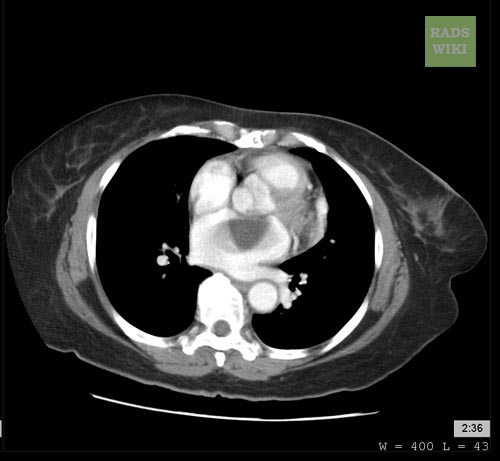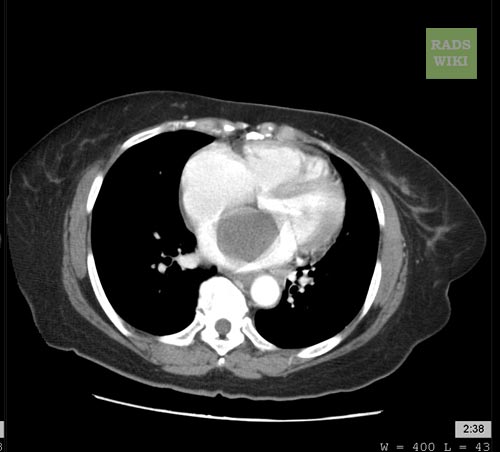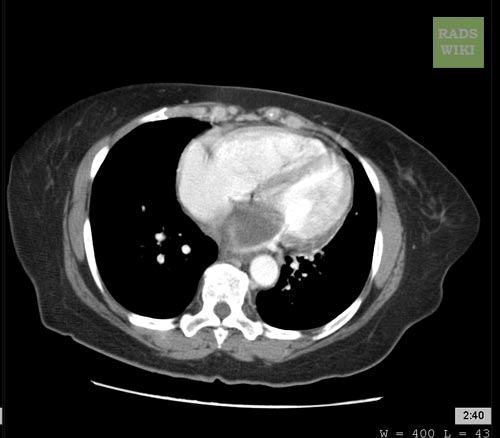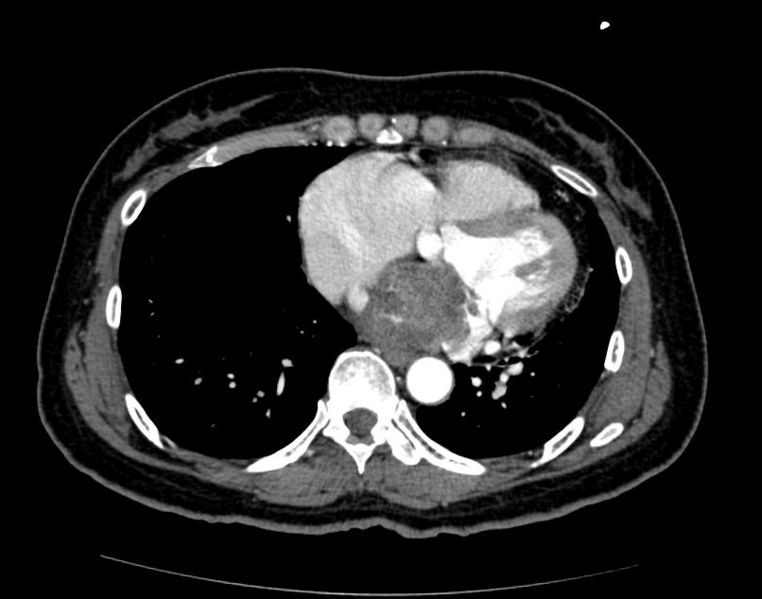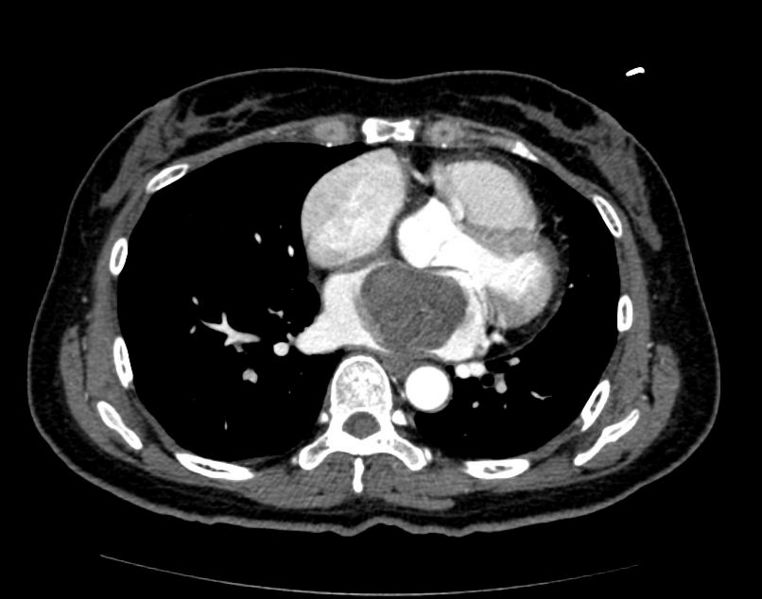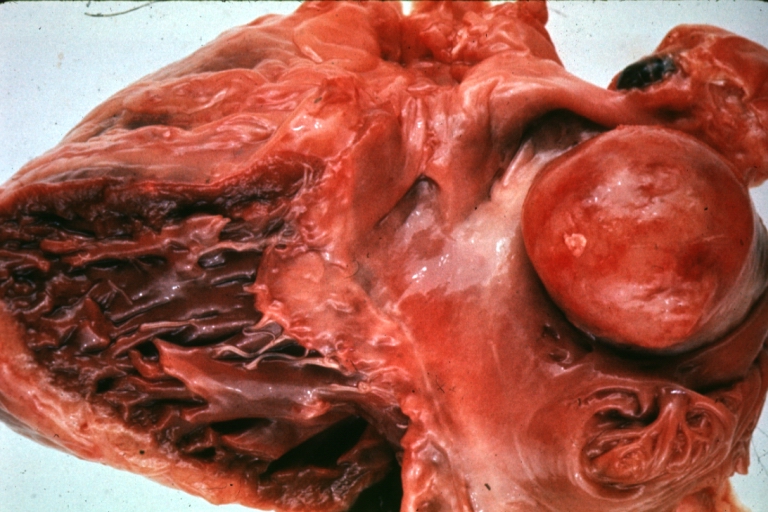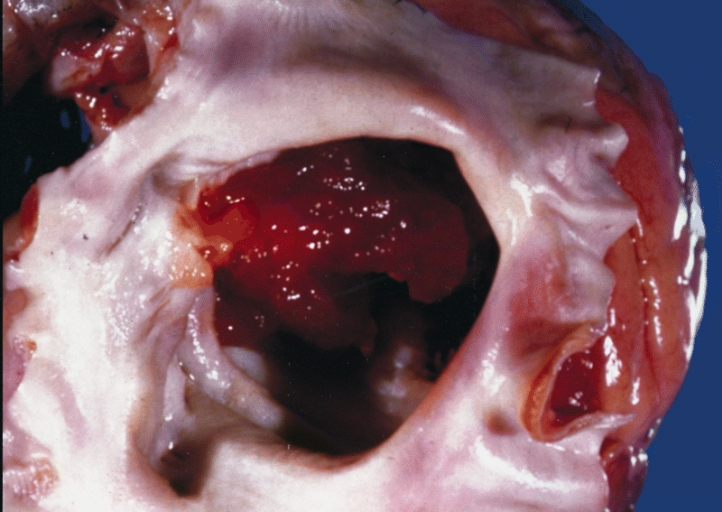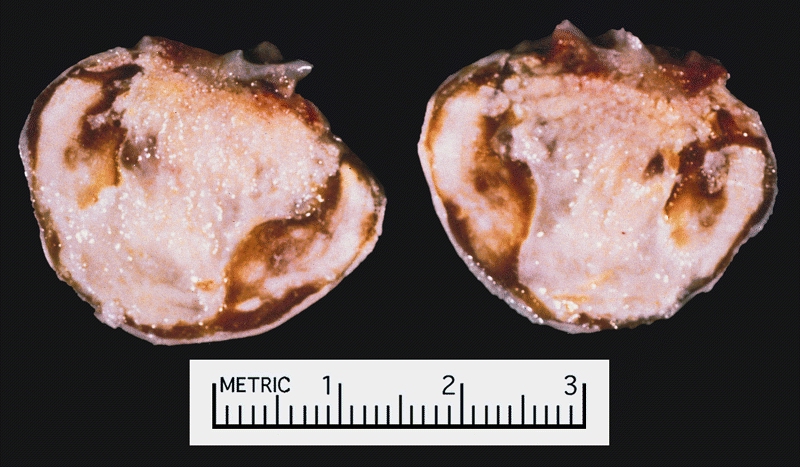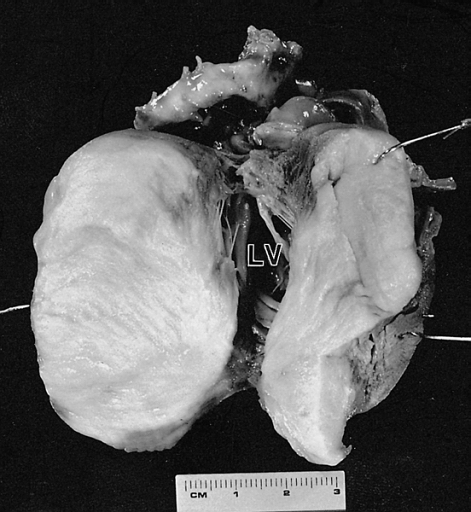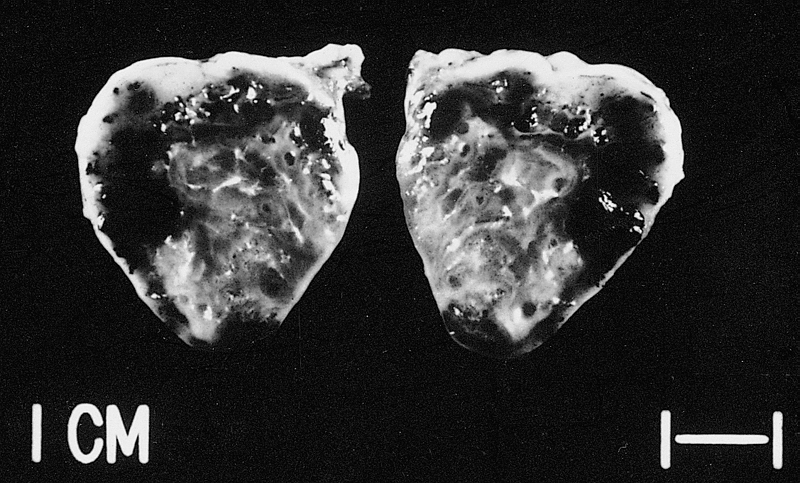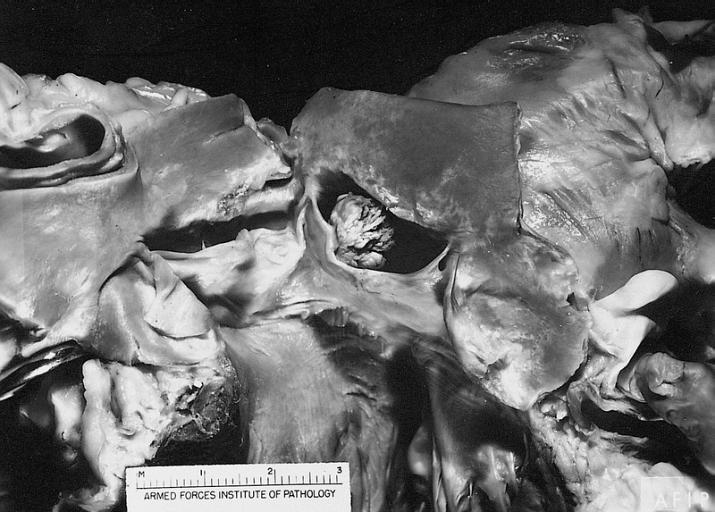Cardiac tumors
| Cardiac tumors | |
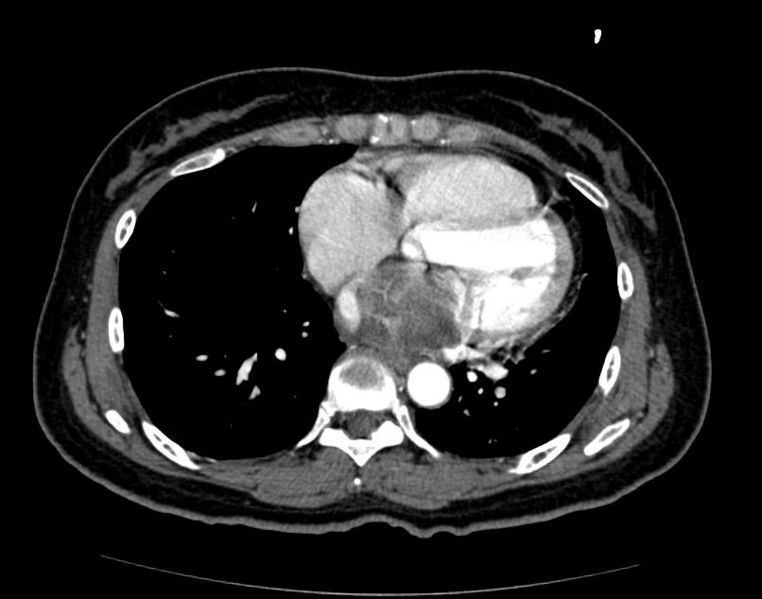 |
|---|
|
WikiDoc Resources for Cardiac tumors |
|
Articles |
|---|
|
Most recent articles on Cardiac tumors Most cited articles on Cardiac tumors |
|
Media |
|
Powerpoint slides on Cardiac tumors |
|
Evidence Based Medicine |
|
Clinical Trials |
|
Ongoing Trials on Cardiac tumors at Clinical Trials.gov Trial results on Cardiac tumors Clinical Trials on Cardiac tumors at Google
|
|
Guidelines / Policies / Govt |
|
US National Guidelines Clearinghouse on Cardiac tumors NICE Guidance on Cardiac tumors
|
|
Books |
|
News |
|
Commentary |
|
Definitions |
|
Patient Resources / Community |
|
Patient resources on Cardiac tumors Discussion groups on Cardiac tumors Patient Handouts on Cardiac tumors Directions to Hospitals Treating Cardiac tumors Risk calculators and risk factors for Cardiac tumors
|
|
Healthcare Provider Resources |
|
Causes & Risk Factors for Cardiac tumors |
|
Continuing Medical Education (CME) |
|
International |
|
|
|
Business |
|
Experimental / Informatics |
Editor-In-Chief: C. Michael Gibson, M.S., M.D. [1]
Associate Editor-In-Chief: Cafer Zorkun, M.D., Ph.D. [2]
Overview
Epidemiology and Demographics
Overview
- Prevalence in autopsy series: 1/300 to 1/5900
- 80% of primary tumors are benign:
- 1/2 (40%) are myxomas
- 1/2 (40% ) are of other types
Benign Tumors of the Heart
The most common primary tumor of the heart is the myxoma. In surgical series, the myxoma makes up as much as 77% of all primary tumors of the heart.[1] Other benign tumors of the heart include rhabdomyomas, fibromas, hemangiomas, lipomas, paragangliomas, myocytic hamartomas, and papillary fibroelastomas[2].
Primary Malignant Tumors of the Heart
About 20 percent of primary tumors of the heart are malignant in nature.[1] Malignant tumors of the heart include rhabdomyosarcomas, angiosarcomas, myxosarcomas, fibrosarcomas, leiomyosarcomas, reticulum cell sarcomas, and liposarcomas. The cardiac sarcomas may occur at any age, but are more commonly seen in individuals in their 20s to 40s. They occur equally in males and females.
A subset of the primary tumors of the heart are tumors that are found on the valves of the heart. Tumors that affect the valves of the heart are found in an equal distribution among the four heart valves.[2] The vast majority of these are papillary fibroelastomas. Primary tumors of the valves of the heart are more likely to occur in males. While most primary tumors of the valves of the heart are not malignant, they are more likely to have symptoms related to the valve, including neurologic symptoms and (in a few cases) sudden cardiac death.
Secondary (metastatic) Malignant Tumors of the Heart
- 20 to 40x more common than primary cardiac tumors
- typically carcinomas, melanomas, and leukemias/lymphomas
- discrete tumors found in 10 to 12% of all autopsies
- any involvement of heart by a malignancy found in 20% of all autopsies
Pericardium
- frequently bloody effusion containing tumor cells
- tamponade
- may also cause constriction from tumor infiltration of pericardial sac
Pathophysiology
- Emboli into coronary arteries
- Retrograde flow through cardiac lymphatics
- Direct extension from mediastinum
- Emboli or spread via great veins => endocardial metastases
- Hypernephroma
- Testicular sarcoma
- IVC leiomyosarcoma
- Ovarian cancer
- Colon cancer
Diagnosis
Electrocardiographic Findings
Replacement of electrically active tissue by inert tissue such as a tumor or Chagas disease can result in Q waves. Pericardial metastases can result in atrial fibrillation or atrial flutter.
CT
Labeled images below are courtesy of RadsWiki and copylefted.
- Atrial Myxoma
- Cardiac Rhabdomyosarcoma
MRI

Pathological Findings
Image shown below is courtesy of Professor Peter Anderson DVM PhD and published with permission. © PEIR, University of Alabama at Birmingham, Department of Pathology
-
HEART: Metastatic Tumor: Gross very unusual large metastatic carcinoid in right atrium
-
Cardiac Myxoma A gelatinous tumor is attached by a narrow pedicle to the atrial septum. The myxoma has an irregular surface and nearly fills the left atrium.
-
Cardiac Myxoma There was a calcified right atrial mass on the X ray of a 47-year-old man. Resection demonstrated a smooth-surfaced tumor. The gritty material seen microscopically on cut section was calcified and ossified myxoma.
-
Cardiac Fibroma Cut surface of the tumor shown in figure 6-2. The left ventricular (LV) cavity is present behind the mass. The patient was a 4-month-old child who died suddenly without a previous medical history.
-
This tumor was resected from the right atrium of a 1-year-old boy with pericardial effusions. Note areas of hemorrhage and dilated vessels. The patient was well 49 months postoperatively.
-
Papillary fibroelastomas are often on the arterial surface and may project into the coronary ostium, causing ostial occlusion. This tumor is in the noncoronary sinus.
Prognosis
The vast majority of the tumors of the heart have a benign course and are not directly fatal. However, even the benign tumors of the heart can be lethal due to either direct extension into the electrical conduction system of the heart (causing complete heart block or a fatal dysrhythmia), or due to emboli from the tumor mass that may have lethal sequelae.
The malignant tumors of the heart have a worse prognosis. Cardiac sarcomas generally lead to death within 2 years of diagnosis, due to rapid infiltration of the myocardium of the heart and obstruction of the normal flow of blood within the heart.[3][4]
References
- ↑ 1.0 1.1 Molina JE, Edwards JE, Ward HB (1990). "Primary cardiac tumors: Experience at the University of Minnesota". Thorac Cardiovasc Surg. 38 Suppl 2: 183–91. PMID 2237900.
- ↑ 2.0 2.1 Edwards FH, Hale D, Cohen A, Thompson L, Pezzella AT, Virmani R. (1991). "Primary cardiac valve tumors". Ann Thorac Surg. 52 (5): 1127–31. PMID 1953134.
- ↑ Burke AP, Cowan D, Virmani R (1992). "Primary sarcomas of the heart". Cancer. 69 (2): 387–95. PMID 1728367.
- ↑ Burke AP, Virmani R (1991). "Osteosarcomas of the heart". Am J Surg Pathol. 15 (3): 289–95. PMID 1705103.
